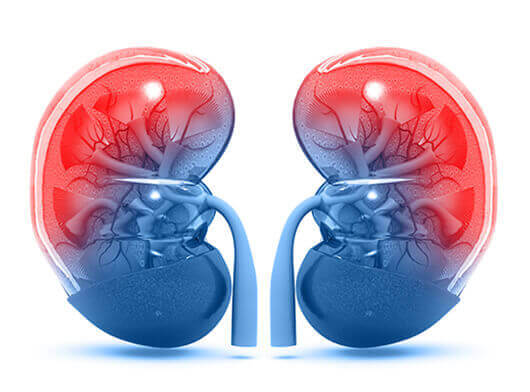- Imaging
- Laboratory
- Abdominal ultrasound - A diagnostic imaging technique that uses high-frequency sound waves and a computer to create images of blood vessels, tissues and organs; it can provide an outline of the kidneys and the tumor and determine if there are problems in the renal or other major veins in the abdomen. It can also determine if there are any lesions or tumor in the kidney.
- Computed Tomography (CT scan of the abdomen) - A diagnostic imaging procedure that uses a combination of X-rays and computer technology to produce horizontal, or axial, images (often called slices) of the abdomen. CT scans give more detailed information than X-rays.
- Magnetic resonance imaging (MRI) - A diagnostic procedure that uses a combination of large magnets, radio frequencies, and a computer to produce detailed images of organs and structures within the body. MRI can determine if there are metastases or any tumor cells in the lymph nodes and/or if any other organs are involved.
- Chest X-ray- A diagnostic test that uses invisible electromagnetic energy beams to produce images of internal tissues, bones, and organs onto film. A chest X-ray can determine if there are metastases (spreading) in the lungs.
- Ultrasound/ CT-guided Biopsy- A biopsy is required to diagnose Wilms’ tumor. A sample of tissue is removed for further pathological evaluation. This may be done through:
- Fine needle aspiration (FNA): A thin needle is inserted into the tumor to remove a small amount of tissue or fluid.
- Core Biopsy - A sample of tissue is removed using a thicker needle.
- In some cases, the biopsy may also be done at the same time as surgery to remove the tumor.
- Blood and urine tests - Tests are done to evaluate kidney and liver function and get a general idea of the child's health.
- Pathology - The tissue samples collected are sent for further pathology evaluations such as Histopathological Evaluation (HPE), cytology and Immunohistochemistry to determine the stage and grade.



.png)
